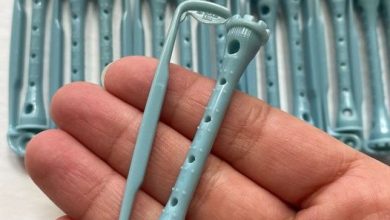The Nostalgic Tradition of Covering Schoolbooks with Brown Paper Bags

ADVERTISEMENT
The Nostalgic Tradition of Covering Schoolbooks with Brown Paper Bags
Introduction
Before the era of stylish pre-made book covers, plastic laminates, and digital learning, there was a simple yet effective DIY method that many students used to protect their schoolbooks: the brown paper bag cover. This resourceful practice was not only a money-saving hack but also a creative and personal touch to school supplies. Many students from the 1960s to early 2000s will fondly remember taking a brown grocery bag, cutting it open, folding it, and wrapping their textbooks with care. But why did this tradition become so popular, and what made it such an essential part of the school experience? Let’s take a trip down memory lane and rediscover this classic school habit.
Why Was Covering Books with Brown Bags So Popular?
This simple act of covering books had many practical benefits, which made it a widely adopted habit across schools:
✅ Protection from Wear and Tear: Schoolbooks, especially those borrowed from the library or school system, needed extra protection to last through the year.
✅ Free and Accessible Material: Instead of buying expensive plastic covers, students and parents could reuse grocery bags, making it a budget-friendly alternative.
✅ Allowed for Customization: With a blank brown paper surface, students could decorate their book covers with doodles, stickers, or even their names in artistic fonts.
✅ School Policy Compliance: Many schools required students to cover textbooks to maintain their condition, and brown paper bags were the easiest way to comply.
✅ Eco-Friendly Solution: Even before sustainability became a trend, this practice promoted recycling and reusing materials creatively.
How to Cover a Schoolbook with a Brown Paper Bag
Creating a DIY brown paper book cover was an art in itself! The process was simple, yet every student took pride in making a neat and well-fitted cover. Here’s how it was done:
Materials Needed
- A brown grocery bag 👜
- Scissors ✂️
- Tape or glue (optional)
- Markers, stickers, or stamps for decoration ✍️
Step-by-Step Instructions
- Prepare the Bag:
- Cut open the brown paper bag along the seams and lay it flat.
- Remove any handles or printed logos if needed.
- Size the Cover:
- Place the open textbook in the center of the flattened bag.
- Leave about 2 inches of extra paper on all sides.
- Fold the Edges:
- Fold the top and bottom edges to match the height of the book.
- Place the book back in the center and fold the side flaps over the covers.
- Tuck in the Covers:
- Slide the front and back covers of the book into the folded side pockets.
- Adjust to ensure a snug fit and reinforce the folds with tape if necessary.
- Personalize the Cover:
- Write your name, subject, or class title neatly on the cover.
- Decorate with stickers, drawings, or even inspirational quotes to make it unique!
A Symbol of Simpler Times
The brown paper book cover wasn’t just about protecting textbooks—it was a symbol of resourcefulness, creativity, and school nostalgia. Many students would personalize their covers with their favorite bands, sports teams, or artistic designs, turning them into expressions of personality. Some even used them as makeshift notepads for doodles or secret messages during boring classes!
ADVERTISEMENT
Why Did This Tradition Fade Away?
While the brown bag book cover was a beloved tradition, it eventually faded with time due to several factors:
📖 Pre-Made Book Covers: Schools and bookstores started selling ready-made, plastic or fabric book covers with elastic edges for easy fitting.
📚 Digital Learning & E-Books: With the rise of digital textbooks and online resources, the need for physical book protection has declined.
♻️ Modern Recycling Methods: While paper bags are still used, they are often recycled in different ways rather than for book covers.
🖍️ School Policies & Trends: Many schools now provide custom-printed book covers with their logos, reducing the need for DIY options.
Conclusion
The tradition of cutting, folding, and covering schoolbooks with brown paper bags was a simple but meaningful part of school life for many generations. It was an activity that taught resourcefulness, creativity, and responsibility, turning an ordinary grocery bag into a functional and personalized school accessory. While modern alternatives have replaced this DIY method, the nostalgia of those carefully covered books remains a cherished memory for those who grew up in an era of hands-on learning and creativity.
Do you remember covering your books with brown paper bags? If so, you were part of a special generation that valued creativity and resourcefulness! 📚✨




